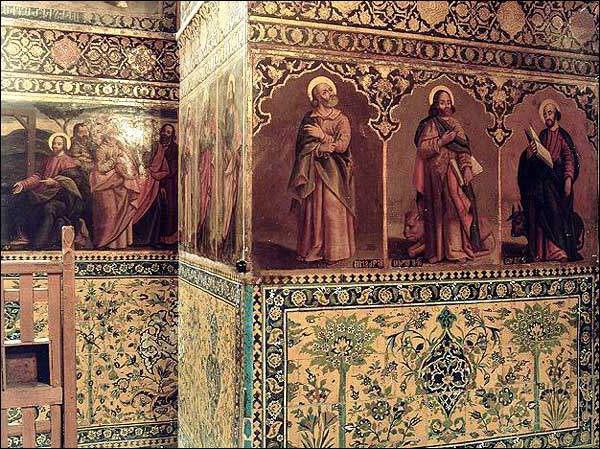Decorative (from the Latin. "Decoro" - "decorate") painting is part of an architectural ensemble or a work of decorative and applied art. Its main purpose is to decorate and emphasize the construction of the building or the function of the object, therefore decorative painting is closely connected with works of applied art or architectural structures.
In the latter case, such a painting is called monumental, not only because of its size, but also because of its connection with architecture, which often bears the features of monumentalism. Both physically and in content, this painting is inseparable from the object for which it was executed, and this is its difference from easel painting. It is this functional connection that determines the plot, the technique, the form, and the ways of performing a
work of art.Decorative painting in its development has several millennia. The oldest samples were found on the walls of the caves, and although the exact time of their application is still impossible to determine, scientists believe that they belong to the Paleolithic. These relatively realistic images, scratched with sharp tools or applied with black soot and red clay, can no doubt be called painting. The genre painting of Ancient Egypt has a more developed look - murals of funerary structures depicting scenes of fishing, hunting, working life, military operations. Despite many conventions of depicting figures, Egyptian drawings are not devoid of realism and quite accurately convey the movements and characteristic poses of people, animals, and birds.
Decorative antique painting of Greece and Ancient Rome was widely used to decorate public and residential buildings, but at the same time it served religious and political purposes. The
decorative compositions and the picturesque ornament placed on the walls and arches were greatly developed. Over time, colored mosaic stones began to supplement with pieces of glass of all kinds of colors.
In Western Europe, the early period of the Middle Ages is characterized by the fact that decorative painting on the walls is replaced by painted glass - stained-glass windows. This is due to a lack of light: window openings in churches until the 12th century were small, and wall paintings were poorly lit. Stained-glass windows, on the contrary, shone with bright colors. In civilian buildings, murals replaced carpets that completely covered cold stone walls. First they were brought from the East, and then they began to make them in Europe. Mostly plots reproduced religious themes, but gradually illustrations of knightly deeds, symbolic images of crafts and arts, virtues and vices began to appear, gradually they acquired artistic realism.

In Russia, fresco decorative painting was developed even earlier than in Western Europe. Having adopted her practice from Byzantium, the Rusich immediately brought their vision of the world into it. The Russian masters were stranger to the abstract, conventional character of Byzantine mosaics and frescoes; they brought clarity and simplicity of expression of ideas into them. It is no coincidence that painting is a Russian word that indicates the
realism of this art, its connection with living images. Monumental and decorative painting from ancient times to this day is involved in the design of the architectural space and the organization of an ideologically rich environment for man.